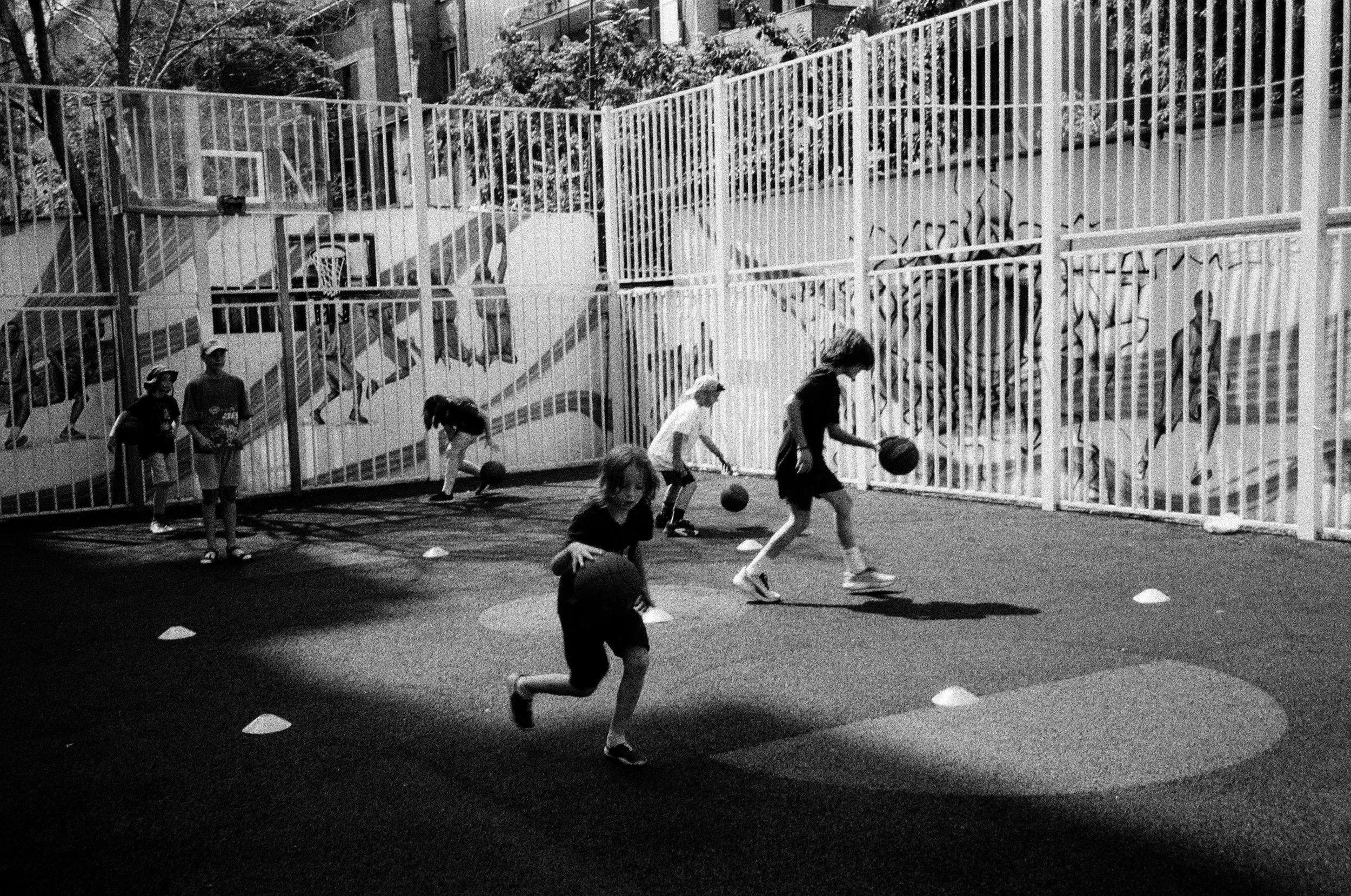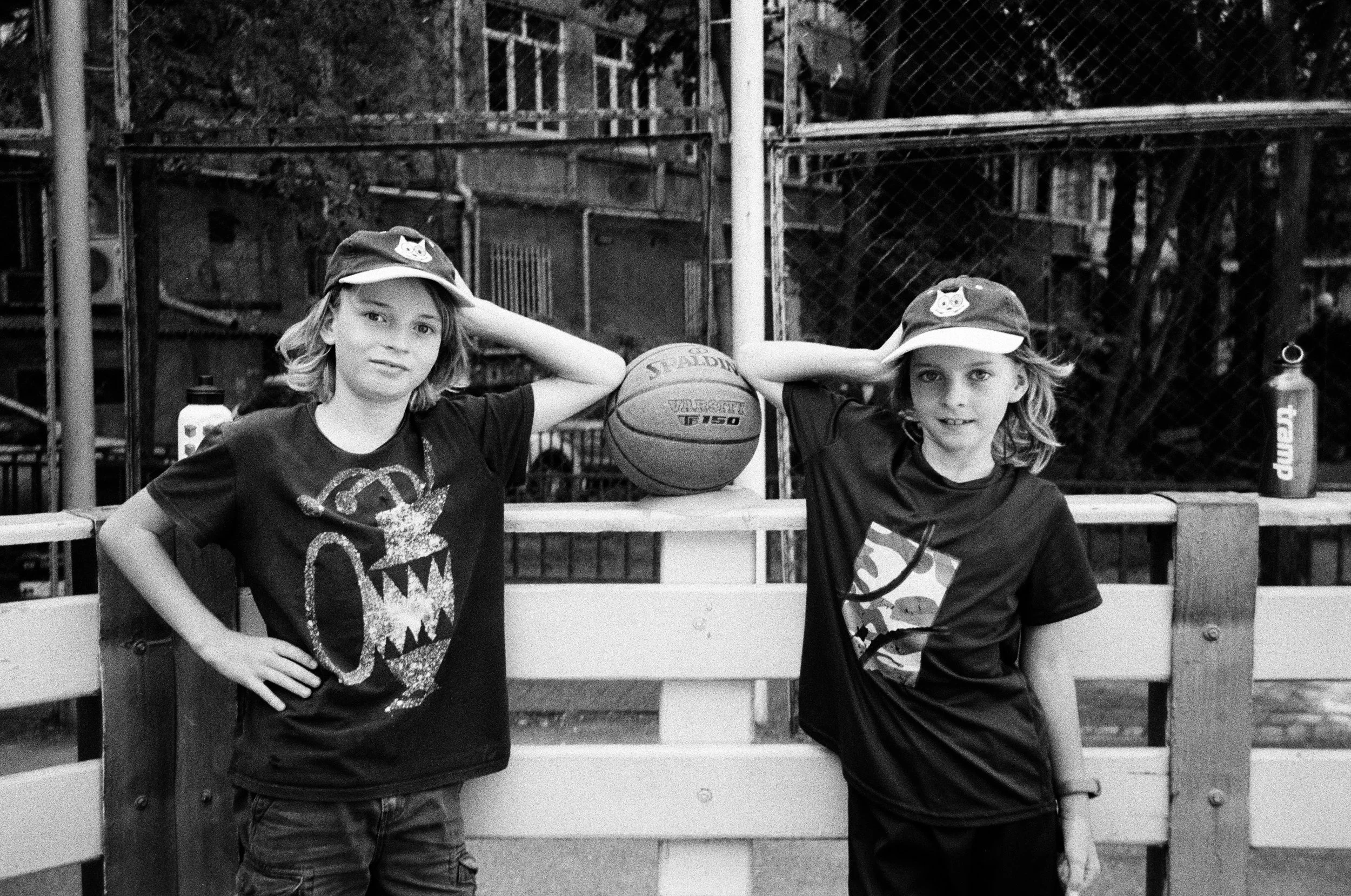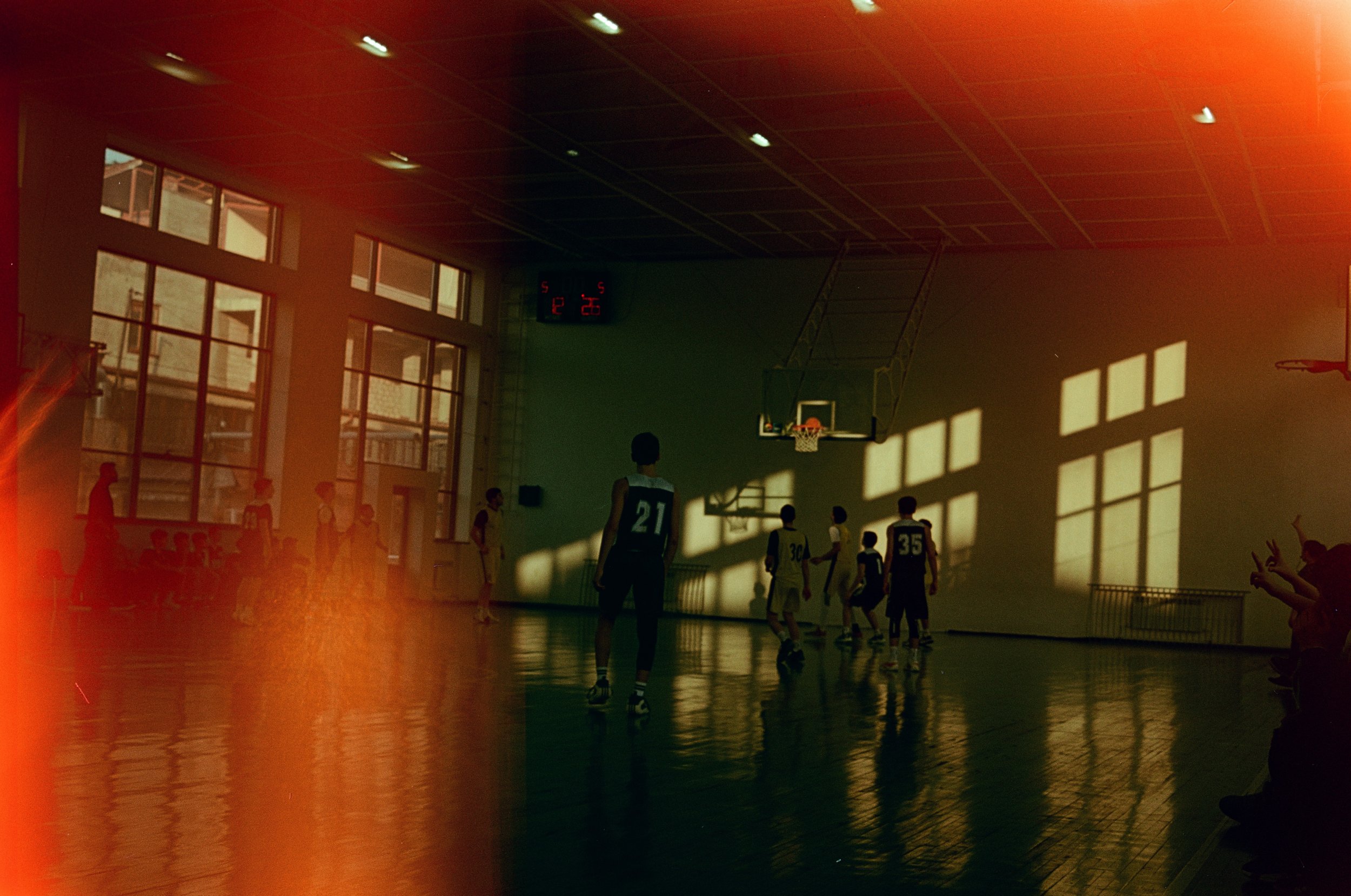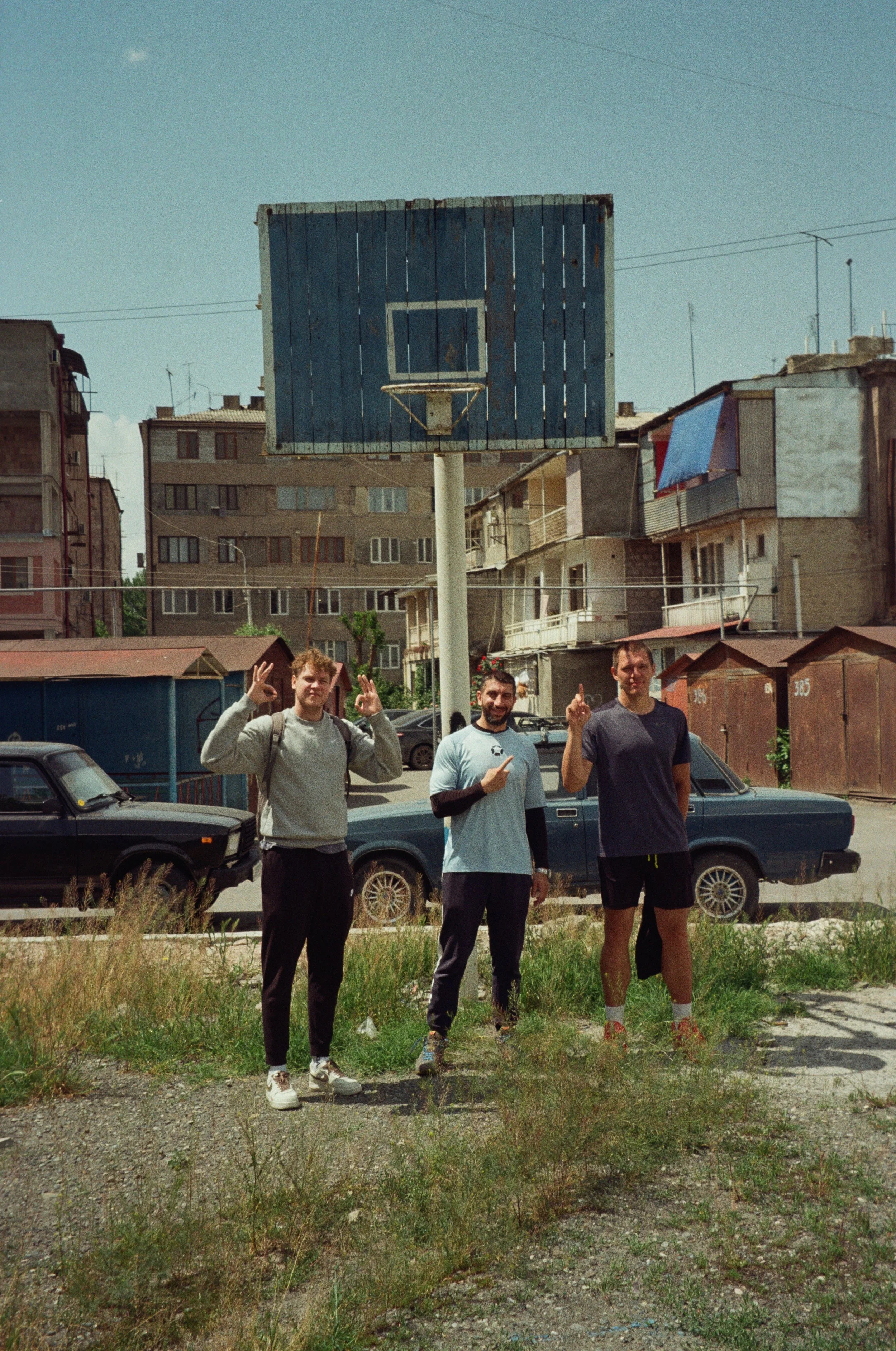Yerevan on Film
A journey into Yerevan, the vibrant, spellbinding capital of Armenia, and into its emerging basketball culture, captured through the mindful eye of one of its newest citizens, a storyteller and educator of the Game: Dima Tumashevsky.
Interview by Overseas | Gianmarco Pacione
Photography by Dima Tumashevsky
“To love Yerevan sincerely is an unwritten law,” writes the celebrated Armenian singer-songwriter Forsh in an ode to the ancient capital of his mysterious yet wondrous homeland, also known as the ‘Land of Stones.’ Dima Tumashevsky has followed that very same unwritten law. He arrived in this pulsating center of the Armenian Highlands out of necessity, forced to leave his native Russia in the wake of the still-raging war. Across borders of distance and culture, his gradual falling-in-love with the ‘Pink City’ has been nourished by something as precious as its majestic, graceful architecture: բասկետբոլը - basketball.
In the shadow of the imposing Mount Ararat, this coach and anthropologist of the Game has set out to document what is, in every sense, an exotic and still-emerging cultural practice. Through film photography, he captures a moment of delicate becoming: the blossoming of a passion that is learning to claim its own space and shape, even in a corner of the world defined by a millennia-old history. Along this personal path, Tumashevsky allows his basketball identity to quietly intertwine with that of the country that welcomed him, crafting an ongoing testament as intimate as it is resonant.
[OVERSEAS] Could you introduce yourself?
[Dima Tumashevsky] My name is Dima Tumashevsky, and I am a 33-year-old basketball coach from the Tula region of Russia. Following the war, I emigrated in 2022 and have since been living and working in Yerevan, Armenia.
Basketball has been central to my life since I was a child.
My father, a huge fan, set up a hoop in our neighborhood where I spent countless hours practicing. He always supported me, taking me to professional games and never missing one of mine. My favorite player is Ricky Rubio; we play the same position and, being only two years apart, I often compared myself to him.
[O] What made you coach basketball?
[DT] I chose to become a coach because I believe in taking kids' voices seriously. Children are "little adults," and adults are "big kids," and that perspective guides my coaching. I started coaching at 20 and hope to continue for the rest of my life.
[O] You emigrated to Armenia, a country usually not associated with basketball. How would you describe Yerevan — its rhythm, its light, its people — to someone who’s never been there? And how have you found basketball there?
[DT] I'm in my fourth year of living in Yerevan. The people here are genuinely friendly and have a unique charm, making it easy to connect. I once walked into a bakery at 7 am and found the baker watching a game—I was instantly impressed. Since then, I always stop for fresh buns and a basketball chat with him. I plan to take his portrait picture one day.
When I first arrived, the rhythm felt very slow. People move at their own pace, enjoying backgammon, coffee, and cigarettes. I’ve grown to like this slower pace, with one exception: some people get annoyed when they hear a ball bouncing early in the morning, which signals the lack of proper sports infrastructure.
Yerevan is a warm, bright city with abundant sunlight, making it perfect for film photography. The beautiful tuff-stone buildings contrast with the charming, crumbling old houses, while the modern cars sometimes look like they've been driven straight out of a video game.
[O] How would you describe the state of basketball and your experience in the Yerevan basketball community?
[DT] In Yerevan, basketball is still very much a growing sport. There are few sports schools or outdoor courts, and the amateur league is small, with only six teams. The professional league hasn't yet attracted big crowds.
Despite this, a core group of local enthusiasts is working to grow the game. The guys from Streetball Armenia host great 3x3 tournaments that truly capture the spirit of basketball. When I first moved here, the lack of opportunities and the relatively low interest in basketball were challenging. I even considered changing paths, but I partnered with some locals to try and grow the game. This led to the formation of our amateur team, the X-Men (named after the cartoon, with everyone wearing their character's nickname), which is a lot of fun. Later, I started a school team, and seeing the kids' enthusiasm—watching basketball become more than just a game for them and their families—is truly rewarding.
[O] What made you start documenting basketball through photography, and what do you look for when capturing a shot?
I find deep meaning in capturing the moments of children growing up through the game.
[DT] I love the atmosphere of the court, especially outdoors: the light, the shadows, the court's location, and all the small details in the background. I aspire to travel and photograph basketball globally. I recently attended the U18 EuroBasket in Tbilisi, which was an incredible experience. Now I'm waiting for Kusturica (ed: Nikola Kusturica) to make it to the NBA! My next travel photography goals are the EuroLeague games in Istanbul and Belgrade.
[O] In this digital era, your choice to shoot on film feels like a deliberate act of resistance. Can you share what analog photography offers you, on both a technical and emotional level?
[DT] It's a multi-layered process, from taking the photo to finally seeing the result. The waiting part is what I love most—you never truly know what you'll get until it’s developed; it feels like magic. Film offers a unique nostalgic charm: the colors, the grain, the light leaks. This aesthetic perfectly suits Yerevan, where the past and present coexist. I want to give a special shout-out to the team at Box Photolab for building a fantastic film photography community here in Yerevan.
[O] You often capture the more intimate, quiet moments of the game—the expressions, the stillness, the atmosphere outside the court. Which emotions do you hope to convey to the viewer through your style of photography?
[DT] I mostly focus on still moments, not documenting the actual game. The training process and the game itself are full of moments that occur outside of the play. The simple "let's take a picture" moment is one of these. I hope these images help people on the court feel more connected, and perhaps, for the kids especially, that these moments will stay with them.
[O] How does the local basketball landscape look like in Armenia today? In which parts does it mirror the culture or character of Armenian players?
[DT] Armenian basketball has significant potential, but it is very much in its initial stages. I genuinely hope the country continues to invest in making the game a bigger part of people’s lives. The U20 EuroBasket hosted in Yerevan this year highlighted the national team's need for further development. However, in a country where you can play basketball ten months a year, I am confident that strong players and good coaches will emerge. It's just a matter of time to enter Armenian youth culture.
[O] What influences your visual language? Is the inspiration drawn from Armenia, or does it come from the broader world of photography, cinema, and art?
[DT] Finding your magazine was a major inspiration for me, so thank you!
I'm also inspired by retro basketball culture: the clothing, the sneakers, the music. Beyond that, I draw inspiration from everyday life and people's creativity, such as finding a basketball hoop set up in an unexpected place.
[O] What narrative about Yerevan or Armenian basketball culture do you aim to capture in the future?
[DT] Right now, my goal isn't just to tell a story, but to actively continue shaping it.












